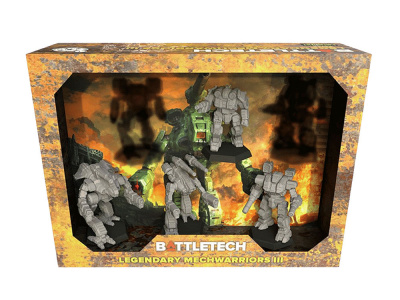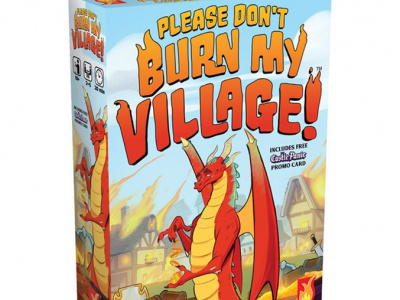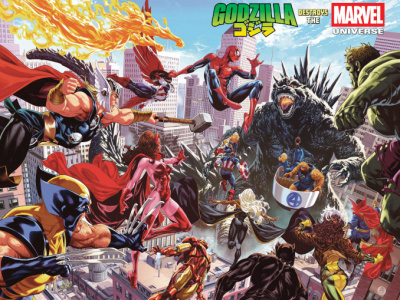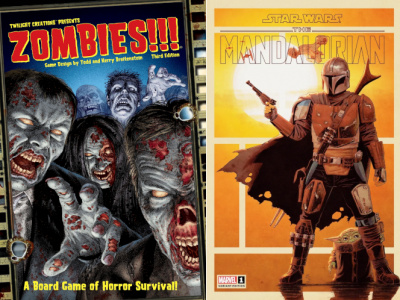Here at ICv2, we occasionally look at back issues of our print predecessor, Internal Correspondence, for a glimpse at the history of our industries. The May 1993 issue of IC was particularly interesting, as it portrayed a comic business in bubble mode, a deal craze in comic companies, several articles that foreshadowed the impending comic crash, and anime and game sales that show some similarities to the present. Internal Correspondence itself had just gone to full color, and was showcasing its new look with the May issue.
The context in the comic industry was that the Death of Superman issues late the previous year had caused an unprecedented wave of publicity, with a corresponding jump in sales (and in aftermarket prices that were driving a speculative frenzy). DC had pumped out ten Superman comics in April, with the Return of Superman the anchor marketing event. The industry was still reeling under the weight. Here are the top stories from comics and other industries in May 1993.
Malibu Comics had signed a number of top creators to do comics, including Howard Chaykin, Jim Starlin, Gil Kane, George Perez, Norm Breyfogle, and others. Malibu had also signed a videogame deal with THQ.
Marvel had just acquired 62% of toy company Toy Biz for the bargain basement price of $7 million in working capital, the Marvel toy license, and guaranteeing a $30 million loan. Our article said, 'For relatively minimal investment, Marvel has acquired control of a toy company with enormous potential (just think of the tie-in possibilities with the James Cameron Spider-Man film). Isaac Perlmutter, who owns the privately held, New York-based Toy Biz, will contribute all of its assets and will become Chairman of the new Toy Biz line.' Avi Arad, then a star toy designer at Toy Biz came with the deal in an exclusive services contract (IC said it was 'almost as important as the acquisition of control in Toy Biz'). Ron Perelman's MacAndrews and Forbes was borrowing $300 million to buy 20% of Marvel to add to the 60% it already owned. (Note -- this implies a market cap of around $1.5 billion. After tripling its stock price in the last nine months, Marvel's market cap has just crossed $1 billion for the first time in years). That puts all the characters in the Marvel story in place. Ten years later Isaac Perlmutter is the largest shareholder in the post-bankruptcy Marvel, Ron Perelman defaulted on his loans and lost control of Marvel, Avi Arad is Marvel's point man in Hollywood and executive producer of the hit Marvel movies, and after finally getting a Spider-Man movie made in 2002 along with two other hit movies, Marvel has finally crept back to 2/3 of the value it had ten years ago.
Kitchen Sink Press announced that it had acquired Tundra Press from founder and publisher (and Teenage Mutant Ninja Turtles co-creator) Kevin Eastman. Scott McCloud's Understanding Comics was an important title named as part of the deal. Kitchen Sink was also happily announcing that an animated show based on Cadillacs and Dinosaurs was going to be on CBS in the fall.
Fantagraphics was doing the Hateball Tour with Peter Bagge and Daniel Clowes (who more recently achieved a break-out level of fame with his creation Ghost World). Clowes had just designed the Certified Cool logo for Capital City Distribution (which eventually sold it, along with most of its other assets, to Diamond Comic Distributors).
Capital and DC were collaborating on the Vertigo Spin Across America Tour with Neil Gaiman (accompanied by then Capital Ad and Promo Manager and current WizKids EVP Martin Stever); Chris Bachalo, Peter Milligan and Duncan Fegredo; and Jill Thompson, Grant Morrison, and Steve Yeowell.
Former Marvel and Valiant EIC Jim Shooter was talking about the new company, Defiant Comics, where he held the same role.
On Capital's top 600 comic list, the #1 comic was Spawn #13, with Image holding eight of the top ten titles (Voyager/Valiant and Marvel had the other two) and twelve of the top 25. Voyager/Valiant had two of the top 25, Marvel had six, and DC five (all Superman titles).
In the game world, Games Workshop was switching its miniatures from lead to pewter due to health and regulatory concerns. It also reorganized its miniature lines, but held prices at $4.99 per two-figure blisterpack.
On the new game bestseller list, the Forgotten Realms Campaign Setting from TSR was #1, with the Vampire Players Guide from White Wolf #2 (CCGs hadn't been invented yet). On the game backlist bestseller list were some familiar names -- Axis and Allies was #1, the Vampire RPG from White Wolf was #2, and TSR's Player's Handbook and Dungeonmaster's Guide were #3 and #4.
POGs (remember those?) were a craze in card shops.
On the video bestseller list, 14 of the top 20 were anime, including #1 title Sol Bianca, followed by Guyver, Odin, and Kabuto. Two UltraMan titles were on the list between #15 and #20.
That issue of Internal Correspondence also premiered a new feature, a monthly column by Internal Correspondence editor (and ICv2 founder) Milton Griepp. That month's column, titled 'Crossing the Rubicon,' was about the huge increases in comic shipments the preceding month. Over 20% of the April 1993 comic dollars were in the ten Superman titles, and April comic dollars were over twice the size of the previous December's. Griepp's comment on these shipments (which ended up being the biggest month in the modern comic industry, and the beginning of the crash that brought down Marvel and many other companies with it) was understated, to say the least, 'Overall, it seems inevitable that there is going to be unsold product in the marketplace when the dust settles.'







